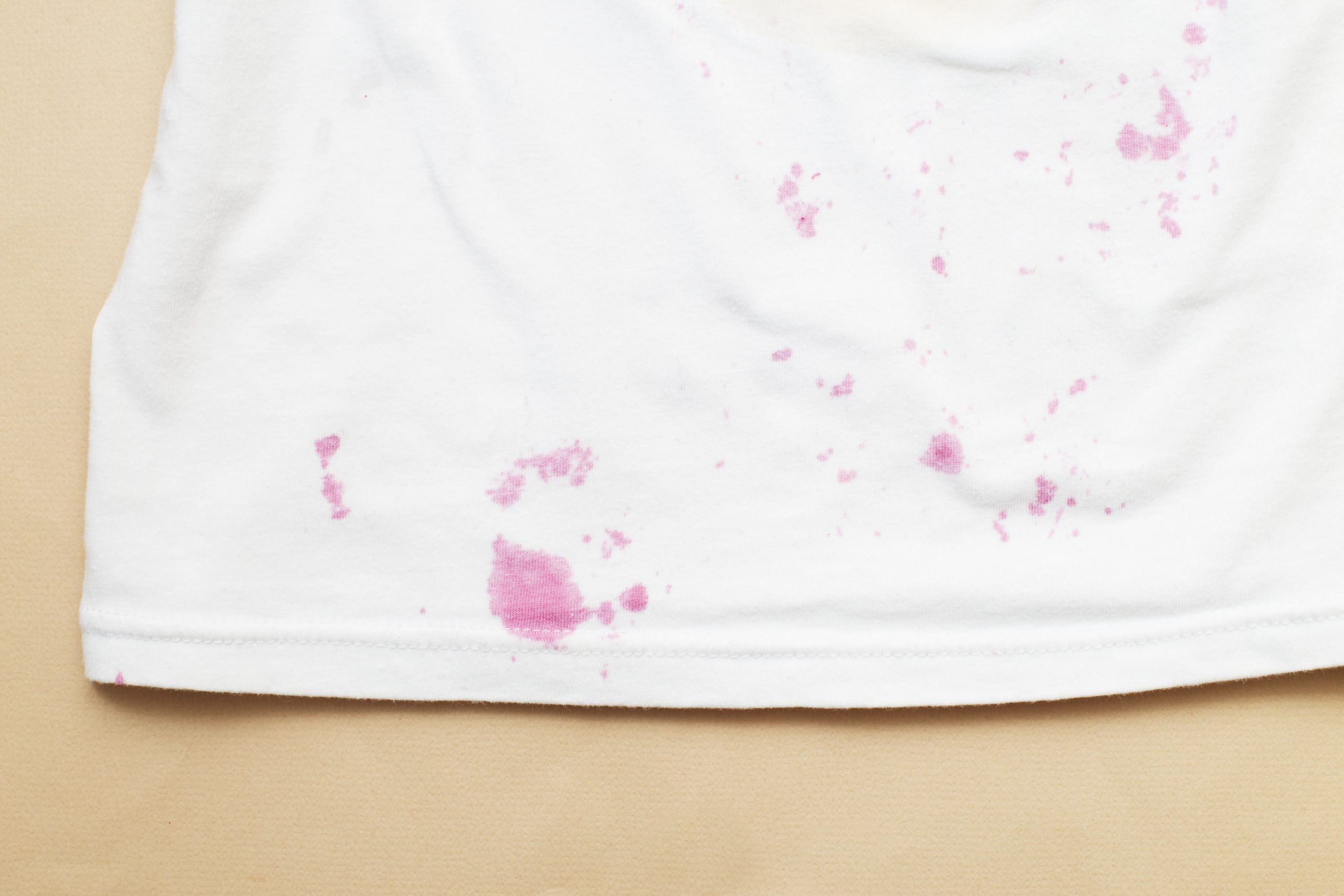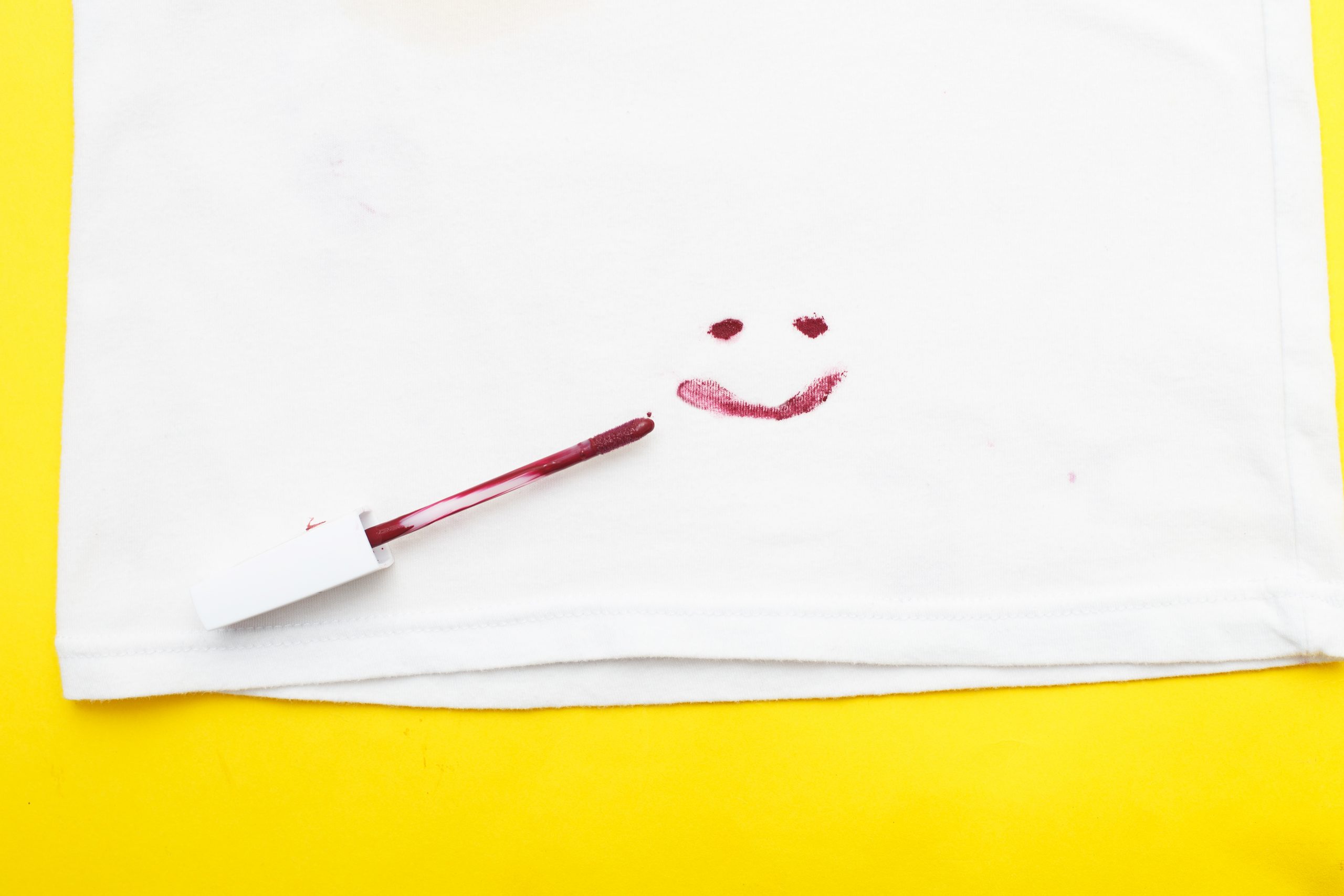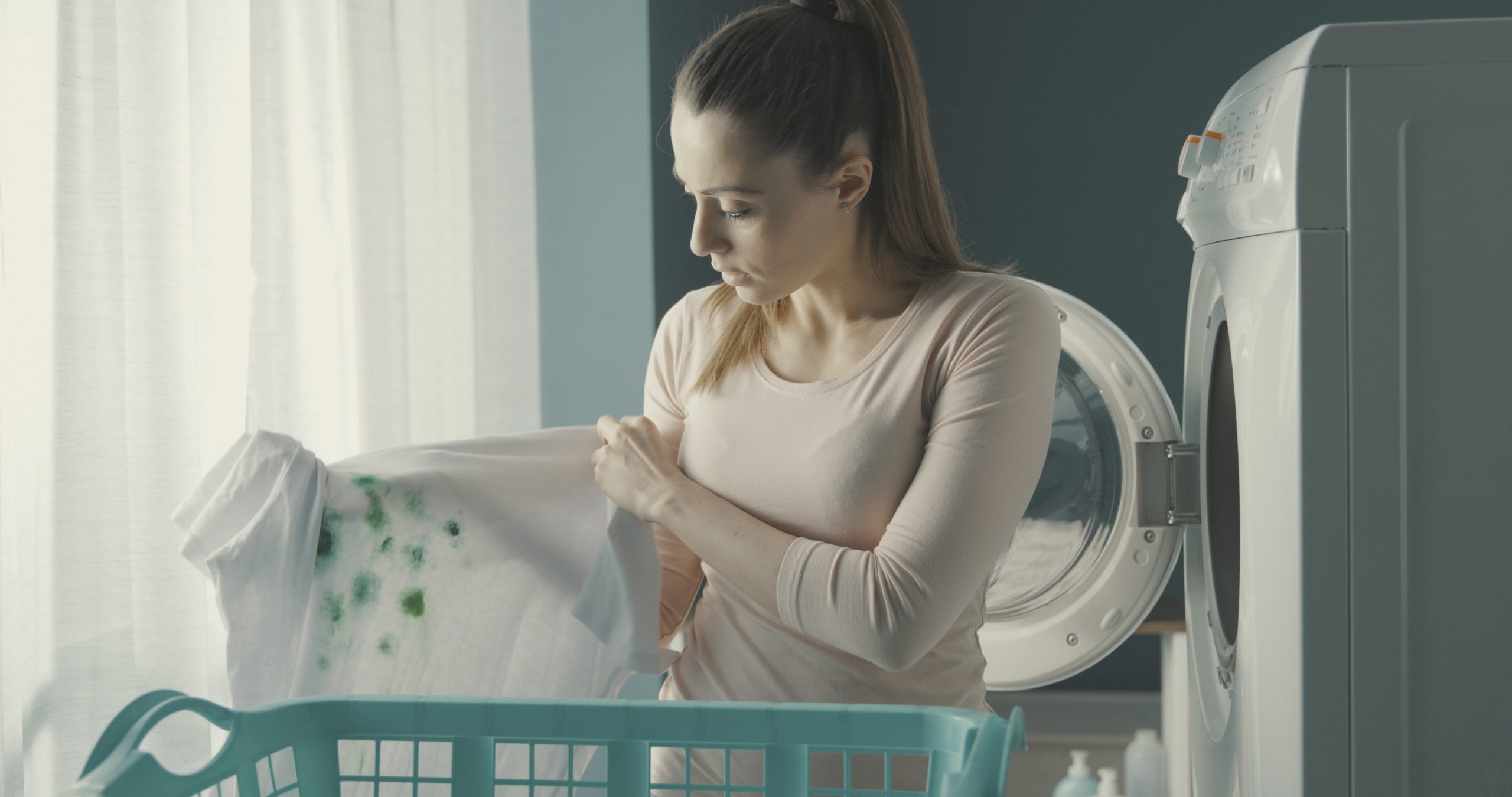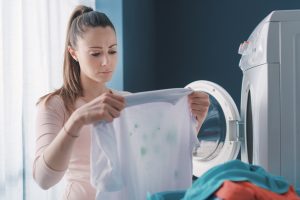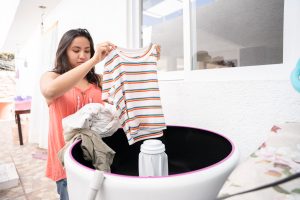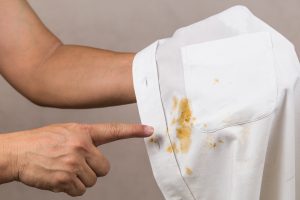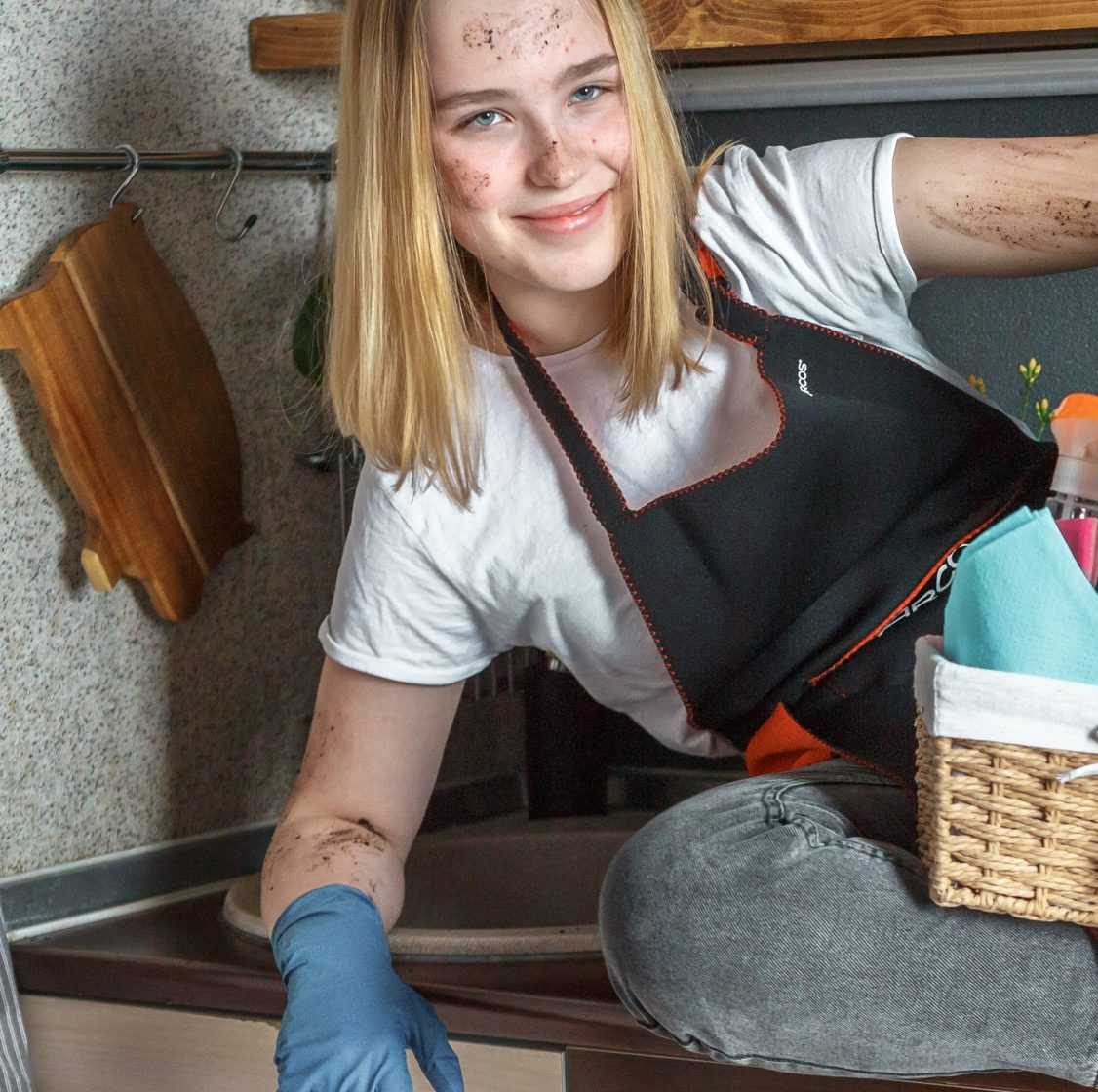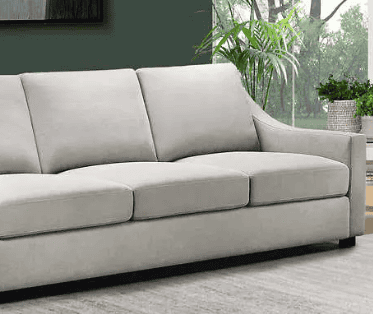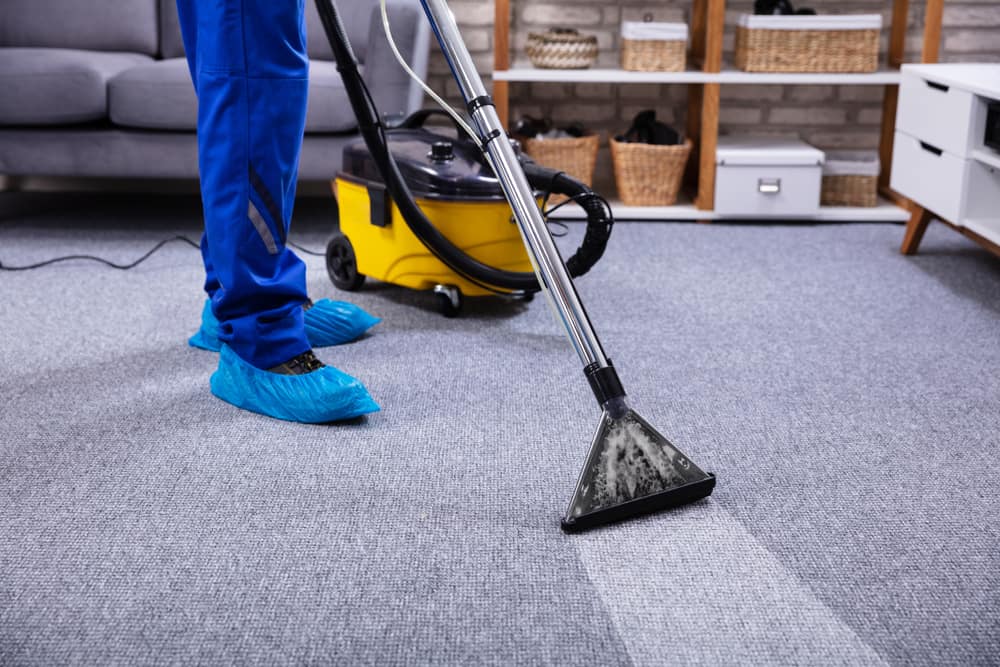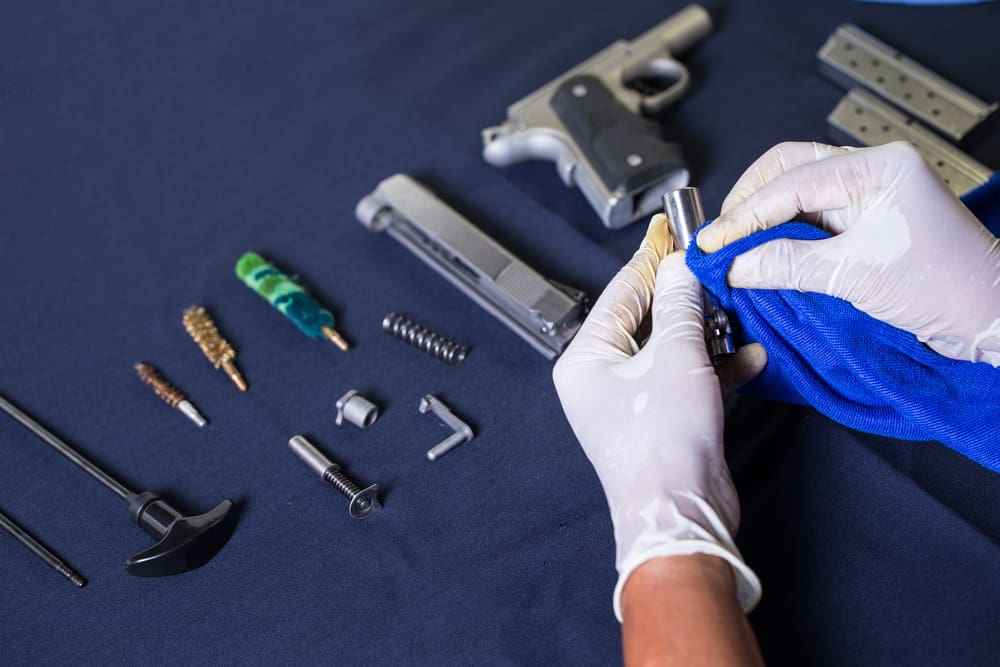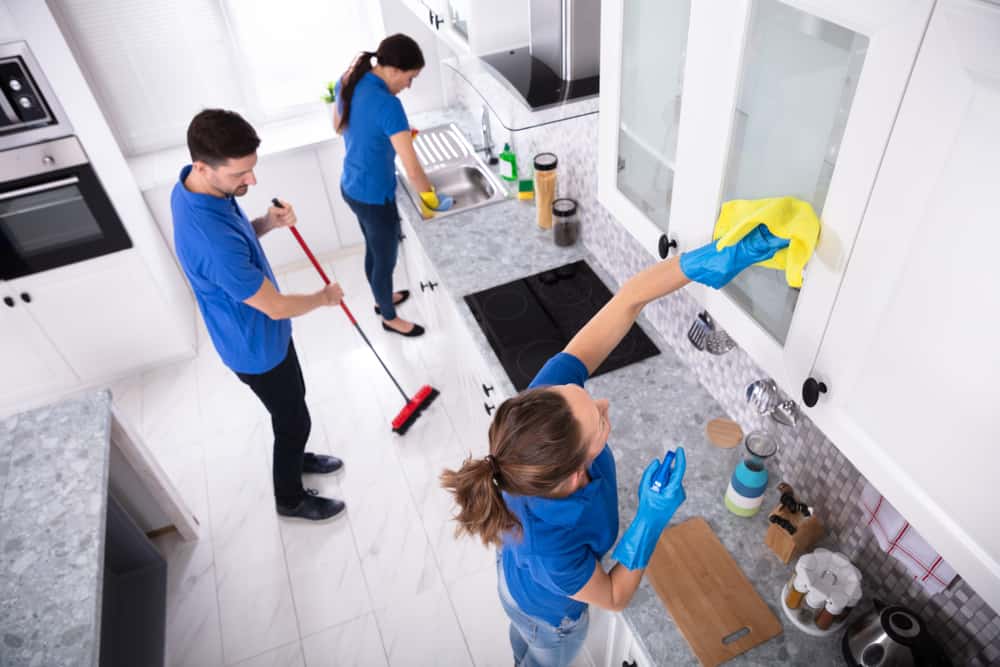Oil stains on clothes can be incredibly frustrating and challenging to remove.
Nevertheless, if you take the right approach and follow a few simple steps, those stubborn stains can be easily removed. In this blog post, we will walk you through a comprehensive guide on how to get rid of oil stains on clothes, ensuring your outfits look as good as new.
Below are 5 easy steps to getting oil stains out of your clothes:
Page Contents:
Step 1: Act Quickly
The key to successful stain removal is acting promptly. As soon as you notice the oil stain, gently blot it with a clean cloth or paper towel to absorb any excess oil. Be careful not to rub the stain vigorously, as this may spread it further and embed it deeper into the fabric.
Step 2: Assess The Fabric
Different fabrics require different treatment methods, so it’s important to consider the type of fabric you’re dealing with.
To determine the type of fabric, you should check the garment label. Many clothing items have labels that provide information about the fabric content and recommended care instructions. Look for words like “100% cotton,” “polyester,” “silk,” or other fabric-specific terms. if you don’t see a label, Look for specific characteristics such as texture, weave, sheen, and pattern. This visual inspection can give you initial clues about the fabric type.
Delicate fabrics like silk or wool may need specialized care, while sturdy fabrics like cotton or denim can withstand more aggressive stain removal techniques. Check the garment’s care label for any specific instructions regarding stain removal and follow them accordingly.
Step 3: Pre-treat the Stain
Before washing the garment, pre-treating the oil stain can significantly increase your chances of success. Apply a small amount of liquid dish soap, laundry detergent, or a specialized stain remover directly onto the stain. Gently massage the product into the stain using your fingers or a soft-bristled brush. Allow it to sit for 10 to 15 minutes, giving the product enough time to penetrate the fabric and break down the oil.
Step 4: Launder the Garment
Once you’ve pre-treated the stain, it’s time to wash the garment. Check the care label for the appropriate water temperature and washing instructions. Use the warmest water the fabric can handle, as heat helps dissolve oil stains. Using a small amount of laundry detergent, wash the garment either by hand or in the washing machine. For extra stain-fighting power, consider adding a stain remover or booster to the wash cycle.
Step 5: Inspect and Repeat if Necessary
After you put the clothing through the wash, inspect the garment to assess the success of your stain removal efforts. If the oil stain persists, avoid drying the garment, as heat can set the stain and make it more difficult to remove. Instead, repeat the pre-treatment step and launder the garment again.
For stubborn stains, you may need to repeat these steps multiple times or consider seeking professional help.
Does Hydrogen Peroxide Get Oil out of Clothes?
Yes, hydrogen peroxide can be effective in removing oil stains from clothes.
Here’s how you can use it:
Test an inconspicuous area: Before using hydrogen peroxide on the oil stain, test it on a small, hidden area of the fabric to ensure it doesn’t cause any discoloration or damage.
Blot the stain: Start by blotting the oil stain with a clean cloth or paper towel to remove any excess oil.
(Avoid rubbing the stain, as it may spread further).
Apply hydrogen peroxide: Pour a small amount of hydrogen peroxide directly onto the stain, ensuring it covers the entire affected area. Let it sit for about 10 to 15 minutes to allow the peroxide to penetrate the fabric and break down the oil.
Hydrogen peroxide can be irritating to the skin and eyes, particularly in higher concentrations. Direct contact with concentrated hydrogen peroxide may cause redness, burning sensations, or even chemical burns. It is recommended to wear gloves and avoid contact with skin and eyes while using hydrogen peroxide.
Remember, it’s essential to read and follow the care instructions on the garment’s label and to test hydrogen peroxide on a hidden area before applying it to the oil stain. Additionally, hydrogen peroxide may have a bleaching effect on some fabrics, so it’s important to use caution and dilute it if necessary.
Does Goo Gone remove oil stains?
Goo Gone is primarily designed to remove sticky residues, adhesives, and gum from surfaces, rather than oil stains from clothes. While it may help break down and remove some oil-based stains, its effectiveness can vary depending on the fabric type and the severity of the stain.
While Goo Gone may have some efficacy in removing oil stains, it’s important to note that there are dedicated stain removers and techniques specifically designed for treating oil stains on clothes.
It’s advisable to explore those options first, and if Goo Gone is used, proceed with caution and conduct a spot test beforehand.
Summary
Oil stains on clothes are no longer a cause for panic. By acting quickly, pre-treating the stain, and washing the garment appropriately, you can successfully bid farewell to those unsightly oil stains.
Remember to consider the fabric type and follow any specific care instructions to ensure the best results.
With these steps, your clothes will regain their pristine appearance, allowing you to enjoy them for years to come.
Keep in mind that the method above can work for olive oil, cooking oils, and even motor oil.
